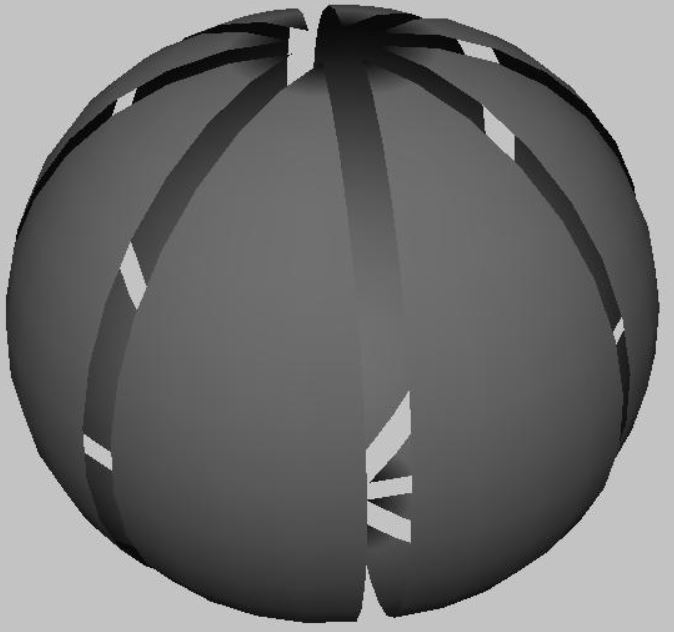nLab G-representation spheres are G-CW-complexes
Context
Representation theory
geometric representation theory
Ingredients
Definitions
representation, 2-representation, ∞-representation
Geometric representation theory
-
Grothendieck group, lambda-ring, symmetric function, formal group
-
principal bundle, torsor, vector bundle, Atiyah Lie algebroid
-
Eilenberg-Moore category, algebra over an operad, actegory, crossed module
Theorems
Homotopy theory
homotopy theory, (∞,1)-category theory, homotopy type theory
flavors: stable, equivariant, rational, p-adic, proper, geometric, cohesive, directed…
models: topological, simplicial, localic, …
see also algebraic topology
Introductions
Definitions
Paths and cylinders
Homotopy groups
Basic facts
Theorems
Topology
topology (point-set topology, point-free topology)
see also differential topology, algebraic topology, functional analysis and topological homotopy theory
Basic concepts
-
fiber space, space attachment
Extra stuff, structure, properties
-
Kolmogorov space, Hausdorff space, regular space, normal space
-
sequentially compact, countably compact, locally compact, sigma-compact, paracompact, countably paracompact, strongly compact
Examples
Basic statements
-
closed subspaces of compact Hausdorff spaces are equivalently compact subspaces
-
open subspaces of compact Hausdorff spaces are locally compact
-
compact spaces equivalently have converging subnet of every net
-
continuous metric space valued function on compact metric space is uniformly continuous
-
paracompact Hausdorff spaces equivalently admit subordinate partitions of unity
-
injective proper maps to locally compact spaces are equivalently the closed embeddings
-
locally compact and second-countable spaces are sigma-compact
Theorems
Analysis Theorems
Contents
Statement
Proposition
(G-representation spheres are G-CW-complexes)
For a compact Lie group (e.g. a finite group) and a finite-dimensional orthogonal -linear representation, the representation sphere admits the structure of a G-CW-complex.
Proof
Observe that we have a -equivariant homeomorphism between the representation sphere of and the unit sphere in , where is the 1-dimensional trivial representation (this Prop.)
It is thus sufficient to show that unit spheres in orthogonal representations admit G-CW-complex structure.
This in turn follows as soon as there is a -equivariant triangulation of , hence a triangulation with the property that the -action restricts to a bijection on its sets of -dimensional cells, for each . Because then if is an orbit of this -action on the set of -cells, we have a cell of an induced G-CW-complex.
Since the unit spheres in (1) are smooth manifolds with smooth -action, the existence of such -equivariant triangulations follows for general compact Lie groups from the equivariant triangulation theorem (Illman 83).
More explicitly, in the case that is a finite group such an equivariant triangulation may be constructed as follows:
Let be an orthonormal basis of . Take then as vertices of the triangulation all the distinct points , and as edges the geodesics (great circle segments) between nearest neighbours of these points, etc.
Examples
Example
(-CW-decomposition of 2-sphere with rotation action)
For , , let be the cyclic group acting by rotations on the plane . Writing for the corresponding representation, its representation sphere has a G-CW-complex structure as follows:

-
The vertices are the two fixed point poles and ;
-
the edges are great circle arcs obtained from any one such arc from to together with all its images under , hence together a free -orbit of 1-cells;
-
the faces are the bigons between each such arc and the next one, hence together a free orbit of 2-cells.
The graphics on the right illustrates this cell decomposition for :
graphics grabbed from here
References
-
Sören Illman, Smooth equivariant triangulations ofG-manifolds for a finite group, Math. Ann. (1978) 233: 199 (doi:10.1007/BF01405351)
-
Sören Illman, The Equivariant Triangulation Theorem for Actions of Compact Lie Groups, Mathematische Annalen (1983) Volume: 262, page 487-502 (dml:163720)
Last revised on February 26, 2019 at 10:23:44. See the history of this page for a list of all contributions to it.